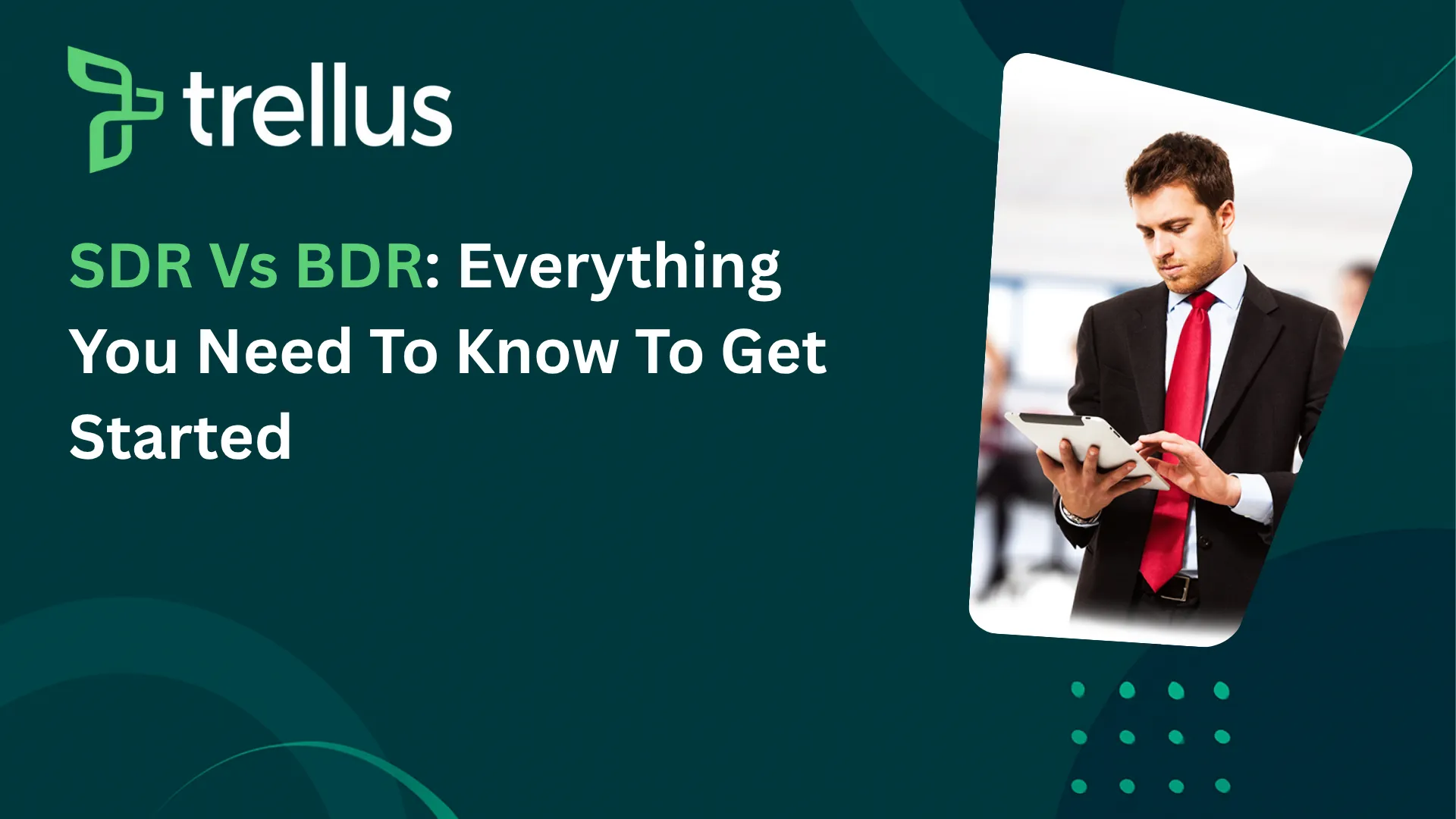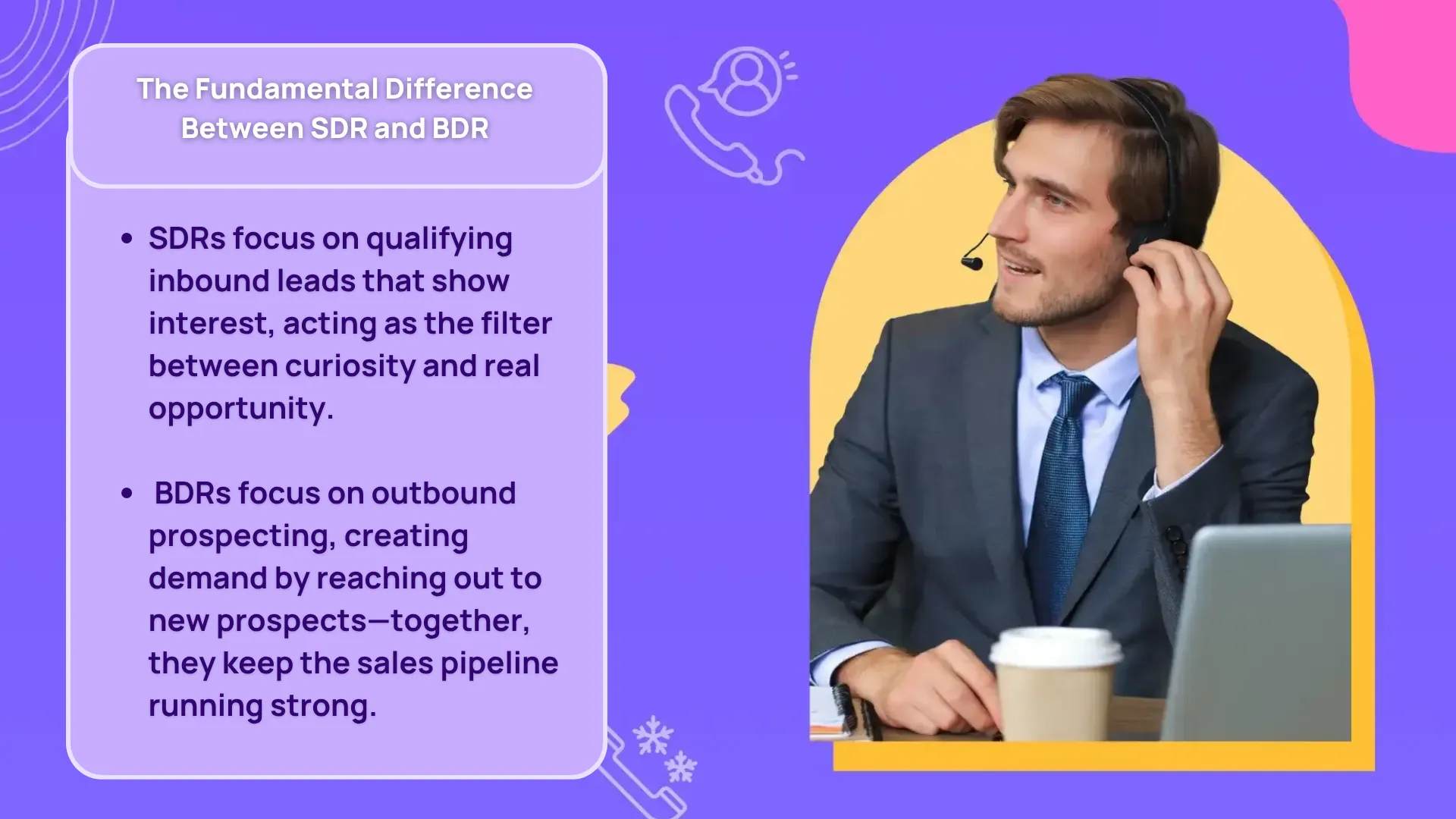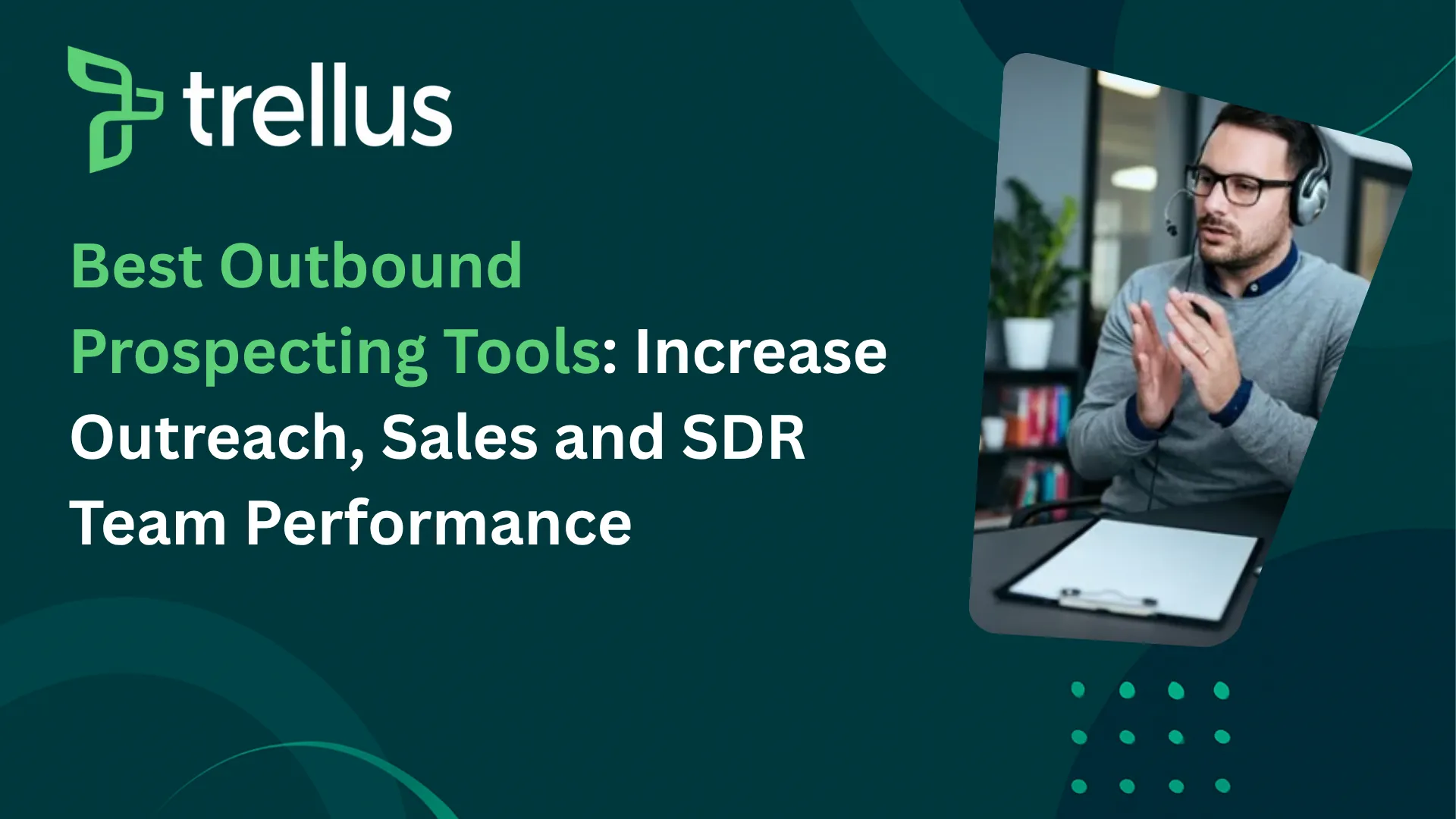
Our Top Picks


Buyers are harder to reach, inboxes are crowded, and competition is fierce.
It’s been like this for a long time now. Especially, with the advent of technology and the way that automation has taken over, there are all sorts of challenges that sales businesses have to navigate through.
Meanwhile, companies are constantly investing in sales development to break through that noise, but one question keeps surfacing: what’s the real difference between SDRs and BDRs.
More importantly, how do you structure a team around SDRs and BDRs.
The answer isn’t just about job titles. It’s about building the right motion for your business stage, aligning talent with strategy, and preparing your team to thrive in a market where precision matters more than brute force.
This piece unpacks the nuances of SDR vs BDR, compares their responsibilities, and lays out proven ways to structure a sales development team that can scale.
We’ll also look ahead to the future—where AI doesn’t just make SDRs and BDRs faster, but fundamentally changes how opportunities are created.
At Trellus.ai, we’ve seen how the smartest teams think about sales development. The companies that win are the ones that combine human skill with intelligent systems. That’s the mindset behind what follows.
The Fundamental Difference Between SDR and BDR - Starting Off With SDR BDR Meaning

Sales Development Representatives (SDRs) and Business Development Representatives (BDRs) often get grouped together, but they play different roles in the sales funnel.
SDRs are usually inbound specialists.
Their job is to qualify leads that come from marketing; web inquiries, gated content downloads, webinar attendees, or event lists. SDRs spend their time determining if these leads are worth passing to sales. Think of them as the filter between raw interest and real opportunity.
BDRs, on the other hand, are hunters.
They reach out cold to potential buyers who may not know your company yet.
Their role is outbound prospecting—researching accounts, building lists, crafting personalized outreach, and starting conversations from scratch. While SDRs work with people already showing intent, BDRs create that intent through proactive engagement.
Both functions are essential. One makes sure inbound demand is converted, while the other creates demand where none yet exists. Together, they form the engine that keeps your pipeline healthy.
Building Your Sales Development Team Structure for Optimal Growth
Early-stage founders often ask: “Should my first sales development hire be an SDR or a BDR?”
The answer depends on your demand engine.
If your marketing team is already driving a steady flow of inbound leads, an SDR ensures those don’t slip through the cracks. If you’re starting with little inbound traction, a BDR can help you create pipeline by going outbound.
A good first hire is often someone who’s scrappy enough to wear both hats. As you gain traction, you can then split roles into inbound (SDR) and outbound (BDR) to maximize efficiency.
When thinking about how to build a sales development team from scratch, keep in mind:
- Your inbound lead volume.
- The complexity of your sales cycle.
- The profile of your target buyer.
- The capacity of your account executives (AEs).
Specialized vs. Hybrid Models: Which is Right for You?
There are two common structures:
- Specialized model – SDRs handle inbound, BDRs handle outbound. This creates focus and allows people to master their role. It’s easier to track performance and optimize specific motions. The challenge? Higher headcount and potential silos.
- Hybrid model – One person manages both inbound qualification and outbound prospecting. This is leaner, great for startups, and builds well-rounded reps. But it can lead to split attention and less predictable results.
The right choice depends on scale. Small teams often start hybrid, then evolve into specialized functions as pipeline needs grow.
The Role of the Account Executive vs SDR
Once an SDR qualifies a lead, it’s passed to an Account Executive (AE). This handoff is critical. Poorly qualified leads frustrate AEs.
Poorly managed handoffs cause leads to stall.
A strong Account Executive vs SDR process means:
- Clear criteria for what makes a lead “sales-ready.”
- Documented workflows for handoff.
- Feedback loops so SDRs know which leads are converting and why.
When this partnership is smooth, conversion rates climb and your sales cycle shortens.
The AI-Powered Sales Development Team: A Glimpse into the Future
AI can help SDRs cut through the noise. Imagine a platform that scores inbound leads automatically, surfaces the highest-intent ones, and even drafts personalized outreach messages. Instead of chasing every download or form fill, SDRs can spend their time with the leads most likely to convert.
Platforms like Trellus.ai are designed with this future in mind—where AI doesn’t replace SDRs, but makes them sharper, faster, and more effective.
AI-Driven BDR Prospecting Techniques
For BDRs, AI is more of a prospecting assistant.
Machine learning can flag accounts showing hidden buying signals—like a hiring surge, recent funding, or tech stack changes. Predictive modeling points them toward accounts that look like your best customers.
Automation also takes tedious work off their plate—data entry, list building, CRM updates—so they can spend more time crafting thoughtful outreach and running multi-threaded plays.
The Impact of AI on the Ideal Customer Profile (ICP) for B2B Sales
Traditionally, companies define their ICP once and stick with it.
When we talk about any kind of artificial intelligence technology, it just acts as an extra layer that makes the ICP dynamic.
Over the course of time, as new data comes in; as in, who’s converting, who’s churning, what patterns emerge; your ICP can adjust in real-time.
That means BDRs and SDRs always target the right buyers with the right message. Conversion rates rise, wasted outreach drops, and pipeline predictability improves.
Measuring and Optimizing Sales Development Success
Activity metrics matter (calls, emails, LinkedIn touches), but outcome metrics matter more: meetings booked, opportunities created, and pipeline influenced.
Good benchmarks:
- SDR: 15–20 qualified meetings per month (depending on industry).
- BDR: 8–12 outbound-sourced meetings per month.
- Conversion: 20–30% of meetings moving to pipeline.
The Importance of a Sales Development Playbook
A sales development playbook gives your team consistency. It includes:
- Messaging frameworks.
- Objection handling templates.
- Call scripts and email cadences.
- Handoff process documentation.
Without it, every rep runs their own motion, and results become unpredictable.
Sales and Marketing Alignment for Lead Generation
The best sales development teams work hand-in-hand with marketing.
On that note, a clear SLA, meaning that marketing commits to a volume of qualified leads, sales commits to a follow-up speed. As a result, it eventually ensures both teams row in the same direction.
When alignment is strong, inbound flows smoothly to SDRs, outbound is more targeted, and pipeline growth accelerates.
Career Progression and Compensation in Sales Development
Sales development is often a springboard. Many SDRs and BDRs move into Account Executive roles, sales management, or even marketing and customer success. The skills—prospecting, communication, resilience—transfer across functions.
Understanding the Sales Development Representative Salary
Compensation is typically a mix of base plus commission. In tech, an SDR salary might range from $45k–$70k base with variable pay pushing total compensation higher. Experience, company stage, and geography influence this — locally-employed SDRs are likely to command higher salaries than someone hired virtually in India through Remote, for example. Top performers often earn more than AEs when they crush quota.
Summing It Up
SDRs and BDRs may sound similar, but their roles are distinct. Together, they form the backbone of pipeline creation. The smartest sales leaders structure their teams to balance inbound qualification with outbound prospecting, while also preparing for the AI-driven future of sales development.
Trellus.ai helps companies design and optimize these functions—equipping teams with the clarity, structure, and intelligent tools they need to scale.
If you’re thinking about how to set up or modernize your sales development team, now’s the time to reimagine the structure.







